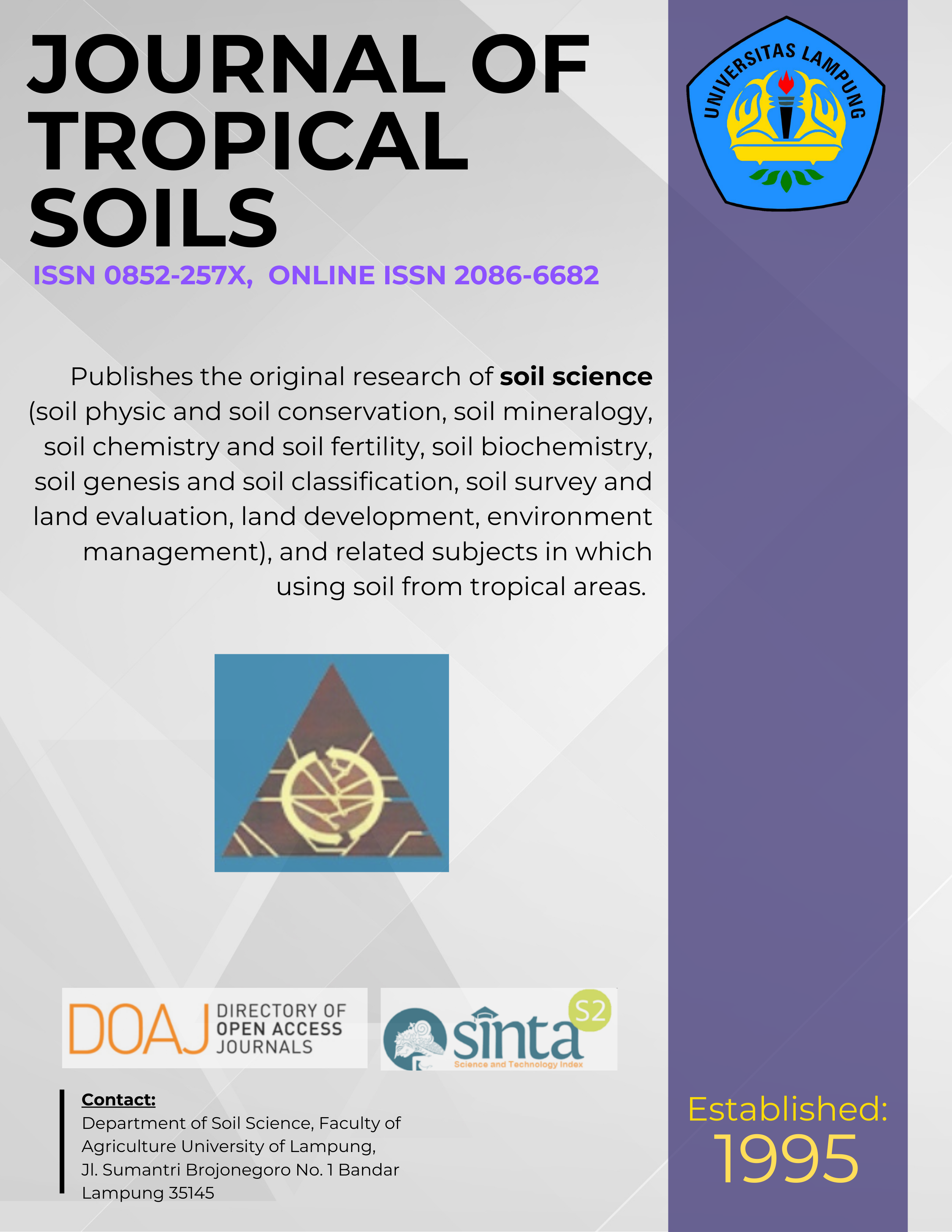Tropical Soil Labile Fractions of Copper in the Experimental Plots ±Ten Years after Application of Copper-Containing-Waste
Main Article Content
Abstract
Copper is reported to be retained in soils for a quite long time particularly in soil treated with some amendments. This research was intended to evaluate the soil labile fractions of Cu ±10 years after application of Cu-containing industrial waste, lime, and cassava-leaf compost. Soil samples were taken from topsoils and subsoils of ±10 years old experimental plots set up in 1998 and factorially treated with a metal-spoon industrial waste at 0, 15, and 60 Mg ha-1, lime at 0 and 5 Mg ha-1, and cassava-leaf compost at 0 and 5 Mg ha-1. The measured Cu labile fractions were compared to those in soils sampled at ±1.5 years and ±3 years after treatments. The results showed that the soil Cu labile fractions in waste treated soils were higher than those in the control treatments eventhough their concentrations decreased with the years of sampling. Lime showed a decreasing effect on soil labile Cu fractions, but the effect decreased with the years of sampling. The effect of cassava-leaf compost application on soil Cu labile fraction was in general not evidenced ±10 years after treatment.
Â
Â
Downloads
Article Details
Section
License for Authors
Authors who publish with this journal agree to the following terms:
- Authors retain copyright and grant the journal right of first publication with the work simultaneously licensed under a Creative Commons Attribution License that allows others to share the work with an acknowledgement of the work's authorship and initial publication in this journal.
- Authors are able to enter into separate, additional contractual arrangements for the non-exclusive distribution of the journal's published version of the work (e.g., post it to an institutional repository or publish it in a book), with an acknowledgement of its initial publication in this journal.
- Authors are permitted and encouraged to post their work online (e.g., in institutional repositories or on their website) prior to and during the submission process, as it can lead to productive exchanges, as well as earlier and greater citation of published work (See The Effect of Open Access).
License for Regular Users
Other regular users who want to cite, distribute, remix, tweak, and build upon author’s works, even for commercial purposes, should acknowledge the work’s authorship and initial publication in this journal, licensed under a Creative Commons Attribution License.

